
Blog Archive
29 October 2009
27 October 2009
Watch the Ares 1-X Launch live
Live Feed
Currently holding at T-4 minutes. Target launch time of 11:04 EST
The full post goes here

Read more...
20 July 2009
Only When You Can Buy a Ticket
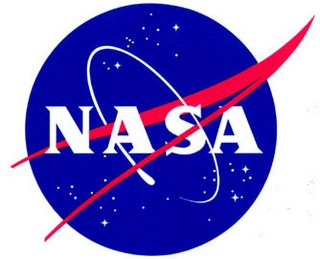
To the Neil Armstrong, Buzz Aldrin and Michael Collins Museum will this issue be laid to rest.
Despite all the evidence that anyone with an inkling of technical training can review and accept, there is still a significant section of the population that believes that Mankind's greatest technical achievement was a hoax. A hoax perpetrated by NASA's Cold War political masters in the Arizona desert solely for the sake of beating the Soviets to Moon. With this belief goes the refusal to face the fact that if the Soviets had been able to expose the secret, they would have in a heartbeat. The fact that they didn't says it all.
There are like minded groups out there - Clavius.org being the most comprehensive, along with the Mythbusters, one of the greatest programs on TV, that can and have done a much better job than I can debunking the nay-sayers conspiracy theories, but I'm still going to do my part. For a more complete list of evidence of the Apollo landings, you can see them here.
The Japanese lunar probe Kayuga imaged the Apollo 15 landing site with its Terrain Camera, a stereographic camera. Here is the original image taken from the ground:
And the reconstruction from Kayuga's Terrain camera. Note that the Terrain Camera has a resolution of 10 meters, so there will be some subtle differences. 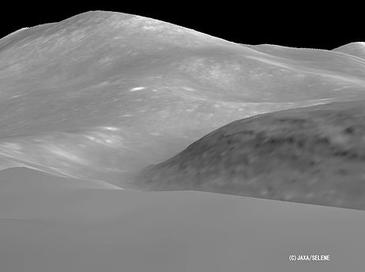
These images come to us courtesy of the LRO, in orbit as we speak. To those of you with smaller monitors, I apologize for the size of the images, but it is necessary.
For purposes of scale, this is the Eagle:
Apollo 11:

Apollo 14:

Apollo 15:

Apollo 16:

Apollo 17:

And we thank those who gave their lives chasing a dream for all mankind - 
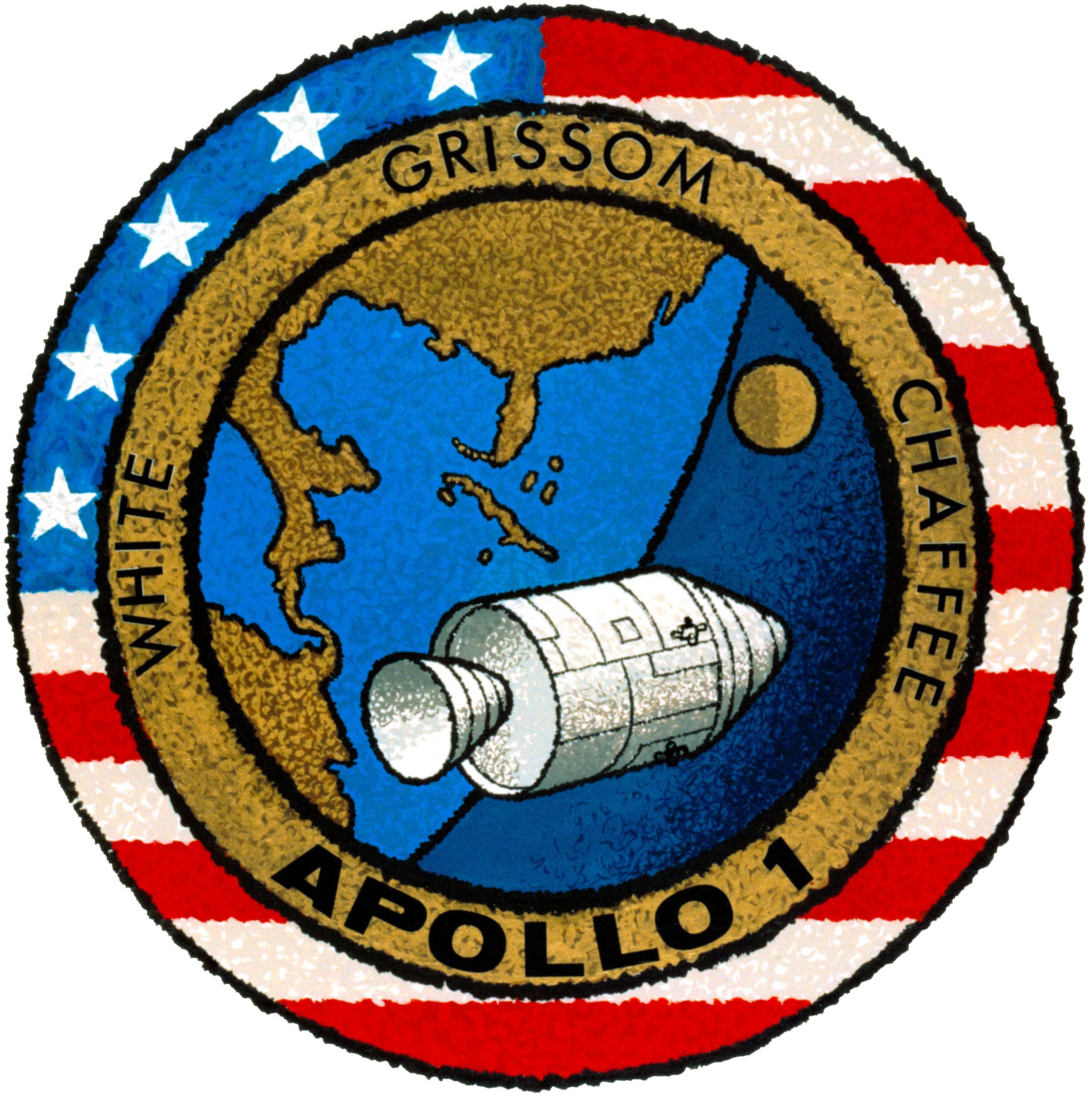
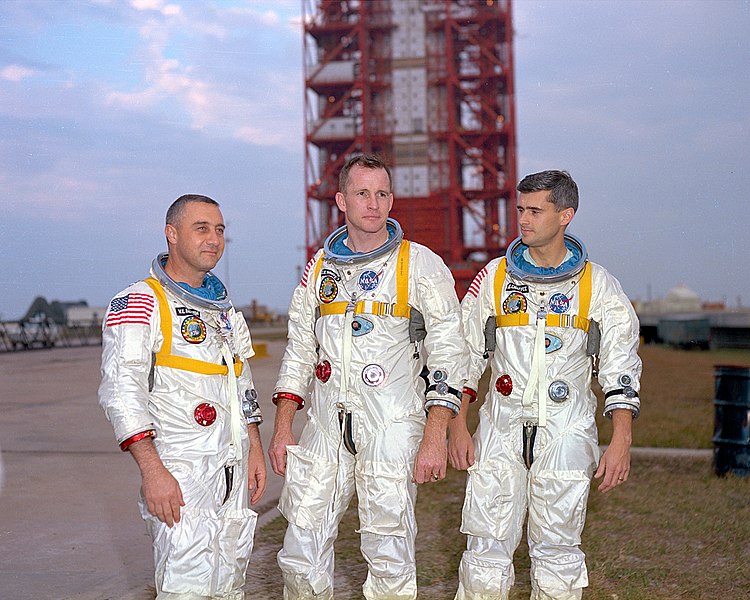

-"It isn't that we don't trust you, Joe [Shea], but this time we've decided to go over your head."
LAUNCH COMPLEX 34, Friday, 27 January 1967, 1831 Hours. Dedicated to the living memory of the crew of the Apollo 1: USAF. Lt. Colonel Virgil I. Grissom, USAF. Lt. Colonel Edward H. White, II, U.S.N. Lt. Commander Roger B. Chaffee. They gave their lives in service to their country in the ongoing exploration of humankind's final frontier. Remember them not for how they died but for those ideals for which they lived.

Read more...
06 July 2009
ISS Flyby Series
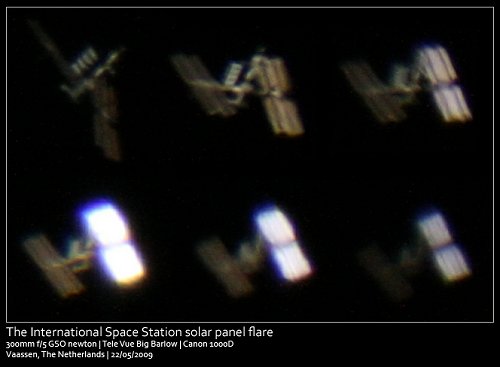
Courtesy of the Space Fellowship:
The International Space Station (ISS) is about to make a remarkable series of flybys over the United States. Beginning this 4th of July weekend, the station will appear once, twice, and sometimes three times a day for many days in a row. No matter where you live, you should have at least a few opportunities to see the biggest spaceship ever built.
NASA's ISS Tracker

Read more...
30 June 2009

Carnival of Space #109 is live.
Besides my own post, I found this one to be particularly interesting.

Read more...
26 June 2009
Google Lunar X PRIZE Fan Map

Courtesy of Mike Fabio of the X Prize Foundation, we have yet another map for space geeks like us.
View #FFD Google Lunar X PRIZE Fan Map in a larger map
You have to be logged into your google account to edit pins on the map. Have Fun!
And while I have you here, check out the Moon Society's map, also a google map.
View Lunar Development World Map: Brought to you by the Moon Society in a larger map

Read more...
13 June 2009
The End of Kayuga (Part 2)
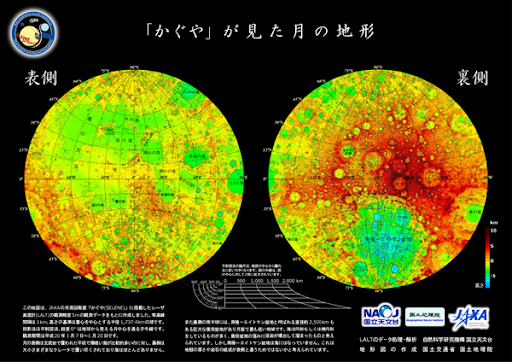
Japan's Lunar Probe Kayuga officially ended its mission to our Moon at 1825 GMT.
Launched 14 Sept 2007, Kayuga was a 17 month long exploration of the Moon's surface. Officially named SELENE (SELenological and ENgineering Explorer), Kayuga is the name it was given by the Japanese public. It consisted of a main orbiter flying at 100 km altitude and two small polar satellites - Rstar and Vstar.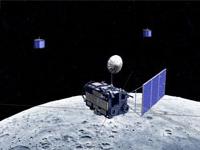
Rstar was a small two way relay satellite used to facilitate communications between Kayuga and controllers back at JAXA . Rstar was also used to measure Doppler shift in the expected orbits of Vstar and the main orbiter. Rstar crashed into the farside on 12 Feb 2009.
. Rstar was also used to measure Doppler shift in the expected orbits of Vstar and the main orbiter. Rstar crashed into the farside on 12 Feb 2009.
Vstar was the other mini satellite used to measure the lunar gravity field. Also known as the VRAD and VLBI (Very Long Baseline Interferometry).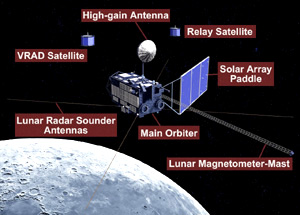
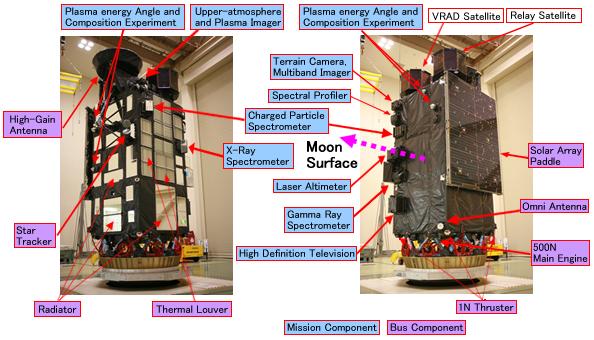
Kayuga has a plethora of instrumentation:
- X-Ray & Gamma Ray Spectrometer for determining the composition of the surface and abundance of certain elements.
- Multi band Imager & Spectral Profiler for the for determining the mineral composition and distribution of the surface.
- Terrain Camera, Lunar Radar Sounder and Laser Altimeter for surface and sub-surface imaging. The Terrain Camera was used to show that there is no surface ice in the permanently shadowed craters of the lunar south pole.
- Several instruments for measuring the Moon's magnetic field and tenuous atmosphere
- The Rstar and Vstar were used to measure the gravitational field of the Moon by measuring the Doppler shift of the Main Orbiter and comparing it to its expected orbit. Vstar was used on the far side where the Doppler shift method did not work.
- The High Definition TV camera was used to take the first HD images of the surface and pretty famous HD video of the Earth rising over the limb of the Moon.
With demise of Kayuga, lunar scientists and enthusiasts turn their focus to NASA's Lunar Reconnaissance Orbiter (LRO) and the Lunar Crater Observation and Sensing Satellite (LCROSS)

Read more...
10 June 2009
The End of Kayuga

Japan's Lunar Probe Kayuga (Selene) is set to execute the final part of it's mission:
Crashing into the surface of the Moon. Kayuga's orbit is decaying and set to intersect the lunar surface. The crash should take place at a speed of about 6000 km/hr on today 10 June around 1830 UMT (2:30 PM EST). If the Moon is visible at that time (East Asia & Australia), keep your eyes pointed towards the southeastern limb of the Moon. If the 2600 kg probe's crash and resultant explosion are going to be visible, that's where it will be.

Read more...
09 June 2009
Lawmakers Slash NASA Budget Request

Especially worrying since everyone else is stepping up in the manned spaceflight department - China even has a Mars probe in the pipeline for later this year.
From Space.com:
Move called a ‘time-out’ as White House awaits review of post-shuttle plans.
WASHINGTON - In a move that reflects the uncertainty surrounding NASA's current strategy for replacing the space shuttle and returning astronauts to the moon by 2020, House appropriators slashed by 16 percent the space agency's $4 billion request for manned space exploration in 2010.
The proposed legislation, marked up June 4 by the House Appropriations commerce, justice, science subcommittee, trims $483 million overall from U.S. President Barack Obama's $18.7 billion budget request for NASA next year. The $670 million cut to the 2010 manned exploration request would leave $3.21 billion, which is less than is available for the effort this year.
Rep. Alan Mollohan (D-W.Va.), the subcommittee's chairman, described the move as a "time-out" in the budget process as the White House awaits the findings of a 10-member panel tasked by the White House to reassess NASA's post-shuttle exploration plans. That panel, led by former Lockheed Martin chief Norm Augustine, is expected to report back with its findings in August.
In his opening statement at the markup hearing, Mollohan said the cut should not be viewed as a diminution of the subcommittee's support for NASA's human spaceflight activities. "Rather, it's a deferral taken without prejudice; it is a pause, a time-out, to allow the president to establish his vision for human space exploration and to commit to realistic future funding levels to realize this vision."
Mollohan told Space News June 4 he is "open to responding to an amended budget request" based on Augustine's review. Mollohan also said he expects the Obama administration to deliver to Congress a "realistic and sustainable" cost assessment of NASA's human spaceflight program in time to amend the 2010 request.
"We invite this report and the administration's response to it, whatever it is," Mollohan said. "We want very much for the funding to be an honest and realistic cost assessment."
Concerns raised
NASA's current human spaceflight plan calls for retiring the space shuttle in 2010 and replacing it with a crew capsule dubbed Orion that would be launched atop a shuttle-derived rocket, the Ares-1, starting in 2015. At the president's request, Augustine's panel is taking a second look at this plan, along with NASA's strategy for returning astronauts to the Moon by 2020, given the likely available budgets over the next several years.
During the hearing, key Republicans expressed concern that the bill would hold NASA's funding next year to 2009 levels. In a June 4 statement Rep. Robert Aderholt (R-Ala.), said he was joining colleagues "in expressing my strong support for increasing this funding as we continue the Fiscal Year 2010 bill process."
Aderholt specifically named fellow Republican Reps. Jerry Lewis of California, the ranking member of the Appropriations Committee; Frank Wolf of Virginia, the ranking member of the commerce, justice, science subcommittee; and John Culberson of Texas.
Other recommendations contained in the bill include a $77million reduction in NASA's proposed space operations budget, which includes the space shuttle and international space station; a $6 million reduction in science; and a $332 million shift in funds from the Cross Agency Support account to a new budget line-item included in the subcommittee's mark. Dubbed Construction and Environmental Compliance, the new account would be funded at $441 million. Congressional aides said the new line item and accompanying funds are aimed at consolidating NASA's various construction efforts into a single pot of money.
Following the markup, the subcommittee posted on its Web site an exhaustive list of earmarks sought by its members. According to the document, money tapped for NASA earmarks totaled close to $15 million.
While increasing NASA's topline funding figure over 2009, Obama's 2010 funding request included an out-year budget profile for the space agency that is some $3 billion lower than was anticipated at this time last year.
Paul Shawcross, chief of the science and space branch in the White House Office of Management and Budget, said the administration's commitment to NASA was evident in the 2009 stimulus package — which included $1 billion for NASA programs — as well as in its 2010 budget request.
"But after 2010, it's flat to 2013," Shawcross said June 2 during a symposium hosted by the George Washington University here. He attributed the flat funding profile to the recession and anticipated recovery measures. He said the Obama administration is facing a $1.26 trillion deficit in 2010, a figure the president hopes to reduce to about $500 billion by 2014. Consequently, funding for NASA and other discretionary spending will be squeezed in the out-years.
"That fiscal environment is reflected in NASA's topline request," Shawcross said.
Meanwhile, W. Michael Hawes, associate NASA administrator for program analysis and evaluation — who is charged with leading the agency team that will provide technical and analytic support to the Augustine panel — said the blue-ribbon commission's work is under way.
"We're starting to get questions from the panel, and we'll be doing a series of fact-finding telecons, site visits, public meetings," he told the symposium audience. Hawes said one area on which the panel will focus is the role international cooperation plays in U.S. manned spaceflight. He said the panel would hear from four international space station partners as part of the review process.
Damon Wells, senior policy analyst in the White House Office of Science and Technology Policy, said pursuing international relationships is a key aspect of space policy. "The panel has been explicitly asked to look at international cooperation," Wells told the audience. "It is part of the dialogue."
Hawes told Space News June 2 that the panel would not have time to produce an interim report, though the committee expects to brief the White House on its findings mid-August. The committee's final report is expected at the end of that month. The Augustine panel's first public meeting is slated for June 17.
Other speakers at the symposium questioned whether the Augustine panel has been granted sufficient time to do its work.
Marcia Smith, president of the Space and Technology Policy Group, a consultancy here, said the Augustine panel would provide little more than a snapshot in time given its deadline.
"Not everyone agrees on the mandated timing," she said. "Congress, in particular, wants it not to be constrained."
Jeffery Bingham, a member of the Senate Commerce, Science and Transportation Committee's Republican staff and senior adviser on space and aeronautics, agreed.
"I am worried about the time they have, and the resources they have," he told the audience. "It's going to be dicey."
Bingham expressed concern that Augustine was told to limit the options his panel is to present to the administration.
"We think it prejudges the outcome," he said. "We want to see that it is wide open and that all options are on the table."
Richard Obermann, staff director for the House Science and Technology space and aeronautics subcommittee, said lawmakers are encouraged by the additional funds for NASA programs in the 2009 stimulus package and the 2010 budget request. But Obermann expressed "uncertainty with the new administration's intentions," particularly in the out-years, where NASA's topline funding is flat.
Oberman said increases in other parts of NASA's budget, including aeronautics and Earth science, came at the expense of out-year funding for space exploration. Obermann said he sees NASA's current funding projections for 2010-2014 as a placeholder, and that he expects the Augustine panel's review to influence funding for the space agency's exploration programs in the out-year timeframe. Obermann said he was encouraged by the choice of Augustine to lead the human spaceflight review, noting testimony Augustine gave before the House Science and Technology Committee in 2004, shortly after former President George W. Bush announced plans to replace the space shuttle and return astronauts to the Moon.
At that time Augustine said manned space exploration offered many benefits, but that "it would be a grave mistake to try to pursue a space program on the cheap. To do so is in my opinion an invitation to disaster. There is a tendency in any can-do organization to believe that it can operate with almost any budget that is made available. The fact is that trying to do so is a mistake — particularly when safety is a major consideration."

Read more...
10 April 2009
The Search for the Moon's Mother
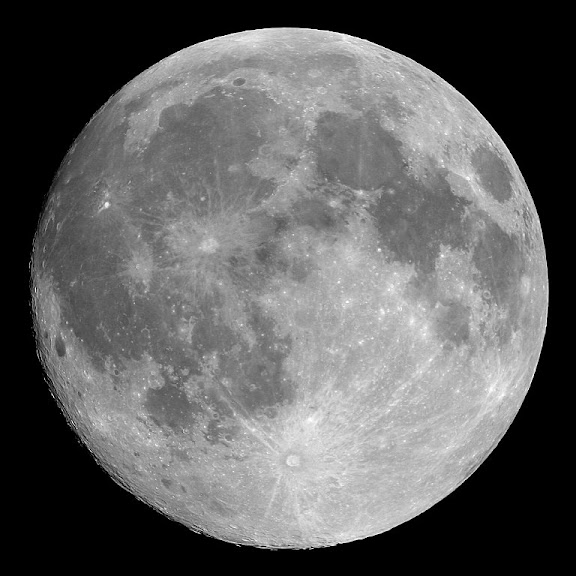
NASA launches the twin STEREO probes in search of remnants of the collision that produced the Moon.
Some scientists believe that the Moon was created when the Earth was hit by a Mars sized object. Theia was conceieved by Edward Belbruno and Richard Gott if Princeton. The Theia Hypothesis is a subset of the Great Impact Theory of lunar formation. Belbruno and Gott believe that the impactor that hit the Earth 4.5 billion years ago came from one the Earth-Sun Langrangian points. Langrangian points are the five places where the gravitational pull of two bodies cancels each other out.
Most people are familiar with Jupiter's Trojan points and the asteroids that reside there. Earth and the Moon also share Lagrangian points. NASA's STEREO probes are going to the two most stable Lagrangian points belonging the Earth-Sun system, L4 and L5. Part of STEREO's mission is to look for planetoids leftover form the formation of Theia. STEREO is primarily a solar observatory mission, similar to the NASA/ESA stalwart SOHO. SOHO has been in orbit around the Sun-Earth L1 Langrangian point since 1996. The STEREO will be passing through the Sun-Earth L4 and L5 points, which are 60 degrees ahead and behind of Earth in its orbit, and they will continue on their paths past both sides of the Sun.

Read more...





